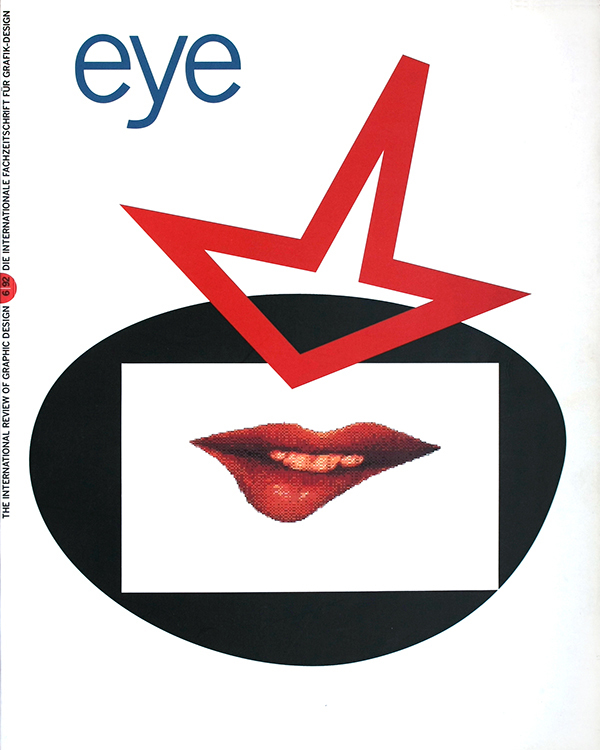Spring 1992
Laughter, the best medicine
Graphic Wit: The Art of Humor in Graphic Design
Steven Heller and Gail Anderson, Watson Guptil, $29.95, £19.95My eyes were opened to humour in design in the early 1970s when I went to a degree show at London’s Royal College of Art. One student had designed a letter to the illustration tutor Bobby Gill from her optician. It was enormous and said in letters a foot high: “Dear Bobby – your glasses are ready for collection”. Seeing work like that made me realise that communication can do more than communicate. It can enliven, enlighten and enrich.
I therefore applaud the intention behind this book, especially given its origins in the United States, where decorative graphics are the norm. It recognises that wit is a seriously functional element in graphic design, and is much more powerful than technique in making design distinctive. Humour, Steve Heller tells us in his introduction, relies on the unexpected. So I hoped for some particularly gleeful surprises in a book celebrating wit as the ability to control incongruous or nonsensical stimuli for purposes of tapping into deeper reservoirs of human experience. The surprises were more mundane.
The art of humour in design is an international subject, given that graphics can cross barrier other languages cannot breach. But these American authors concentrate almost entirely on American work, even though the book loses credibility as a serious source by missing out a whole chunk that is vital to the thesis. The compensation might have been a gain in sharpness and depth as a result of the authors’ close knowledge of their home ground. Not so.
What is really unexpected is that a book on graphic wit, having largely restricted its scope to the United States, should then constrict its coverage still further by leaving out giants such as Robert Brownjohn, Bob Gill, Bob Blechman, Saul Bass and Ben Shahn. The work that is included is a poor exchange. Many pieces I do not consider good examples of graphic design, let alone wit. There are too many obvious ideas. The names that the authors choose to emphasise, in the interviews which make up the second part of the book, I must confess are mostly unfamiliar to me: Mike Hicks, Etienne Delessert, David Kaestle, and Forrest and Valerie Richardson – “a funny couple”.
I wonder if this is one of those books that has been written the wrong way round. Some books are planned from scratch, starting with the concept – if the book is about such and such, then this is the content it requires. Other books start from pre-existing content which has accumulated or been collected for other reasons, until somebody says: “That would make a good book”.
Such a chronology might explain the rather bizarre arrangement of content here. The categories are not analytical (organising an argument), but descriptive (bringing together random examples). For example, there is a section on “typeplay” – jumbled letters, funny typefaces, metamorphic lettering, rap typography, faces made of type, and wordplay – which puts dire and delightful work on the same page. The link may simply be that two examples both show letters made from objects. But the fundamental difference between Mervyn Kurlansky’s “F” seen in the side view of an electric plug, and an unknown designer’s deliberate folding of a tie to form a “T” goes unremarked.
The authors comment on this “metamorphic lettering” as follows: “If the Trajan inscription is the paradigm of Roman letterforms, then the Gellone Sacramentarium, dating from between 755 and 787 AD, is perhaps the archetype of metamorphic, even comic lettering.” Text such as this reads more like a thesis than an authoritative guide to wit. Shoring up the book with references to Apollinaire, Hazlitt and Freud seems a hazardous ploy when the audience, presumably, is other designers. I think many designers will skip the theorising and just read the captions, especially since the work shown is often parallel to, rather than an illustration of, the text.
The book on graphic wit I would pay quite a lot for would be as comprehensive and richly stimulating as The Dictionary of Visual Language by Philip Thompson and Peter Davenport, published in 1980. Or it would show the place of wit within the toolbox of graphic design by examining how designers have tackled the same sort of job with and without humour. Or it would make the basic case simply and convincingly of why clients should be braver in using humour. Designers would certainly buy copies of that.
First published in Eye no. 6 vol. 2, 1992
Eye is the world’s most beautiful and collectable graphic design journal, published for professional designers, students and anyone interested in critical, informed writing about graphic design and visual culture. It is available from all good design bookshops and online at the Eye shop, where you can buy subscriptions and single issues.

